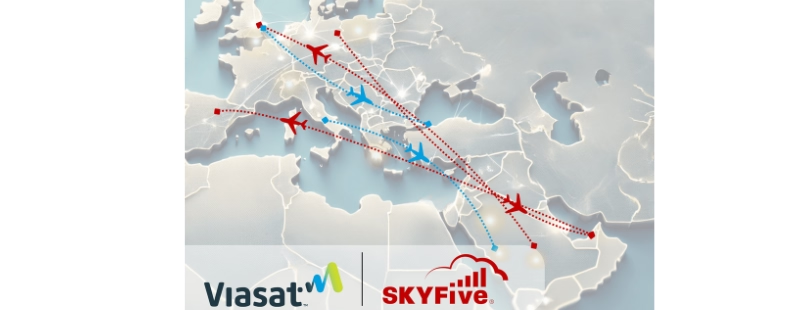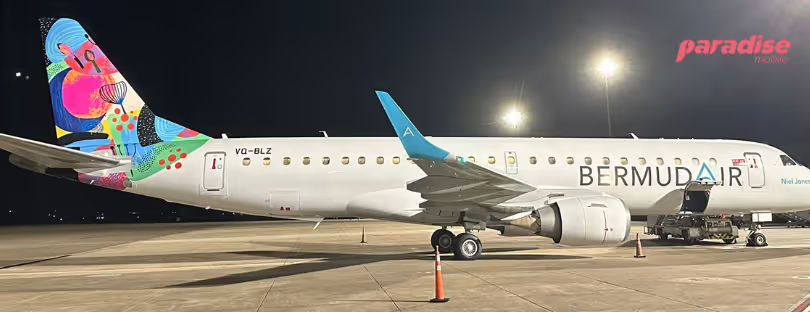
Viasat and SkyFive pact to support ATG roaming in Middle East, Europe
SkyFive and Viasat announced the signing of a roaming agreement between the European Aviation Network (EAN) and SkyFive’s upcoming networks in the Middle East. This agreement is expected to facilitate continuous in-flight connectivity coverage from all of Europe to Saudi Arabia and beyond. With over 500,000 flights annually between Europe and the Middle East, the demand for staying connected while flying between the two regions has never been higher.
Now, thanks to this new collaboration, passengers on equipped aircraft will be able to enjoy seamless broadband Internet access on flights lasting 7 hours or more, a great solution for fleets in Europe and the Middle East.
“I can confirm Viasat and SkyFive have agreed to develop a solution which will allow aircraft equipped with Viasat’s European Aviation Network (EAN) air-to-ground inflight connectivity system to connect to SkyFive networks, and vice versa, enabling SkyFive-equipped aircraft to access Viasat’s EAN network,”
a Viasat spokesman said.
“There are no special hardware or software changes required for current EAN customers to roam onto SkyFive’s networks,” he adds. “However, the service must comply with local and regional regulations and the software needs to be configured to operate within the wider coverage area.”
What this means for airlines and passengers is that “continuous inflight connectivity coverage from all of Europe to Saudi Arabia and beyond” is expected to be facilitated, noted SkyFive on LinkedIn.
“With over 500,000 flights annually between Europe and the Middle East, demand for staying connected while flying between the two regions has never been higher. Now, thanks to this new collaboration, passengers on equipped aircraft will be able to enjoy seamless broadband Internet access on flights lasting seven hours or more, a great solution for fleets in Europe and the Middle East.”
SkyFive is not new to the IFC market or indeed to the EAN, which was built by Deutsche Telekom and Inmarsat (now Viasat). The German firm acquired Nokia’s air-to-ground assets in 2019 after Nokia served as a key technology partner on the EAN, and it continues to support the network.
But beyond the EAN, SkyFive has commercialized its own ATG inflight connectivity product (dubbed A2G) and trialed it on SAUDIA in Saudi Arabia, in partnership with local telco stc (Saudi Telecom Company). SkyFive management highlighted the benefits of providing contiguous coverage for the entire EMEA region already last year, hinting, perhaps, at what was to come.
Viasat’s own dance with the European Aviation Network is a fascinating one. It once engaged in legal battles with Inmarsat over EAN’s launch, arguing that the ground portion of the network was supposed to be complementary to the satellite, and not the primary means of transmitting data. But when it acquired Inmarsat on 31 May 2023, it also picked up Inmarsat’s EAN business, including several airline customer contracts for the hybrid solution.
Putting EAN customers at ease, Viasat and Deutsche Telekom — which operates the EAN’s LTE-based ground network — in November 2023 forged a long-term agreement, committing to support IFC for airline partners across the network. A few months later, Lufthansa Group carriers Austrian, Lufthansa, and Swiss announced they would bring EAN-powered inflight connectivity to 150 narrowbodies, with equipment expected to start this quarter.
Now Viasat and SkyFive are poised to enable expanded coverage for those EAN operators that configure the software to facilitate roaming onto SkyFive networks and indeed vice versa.











